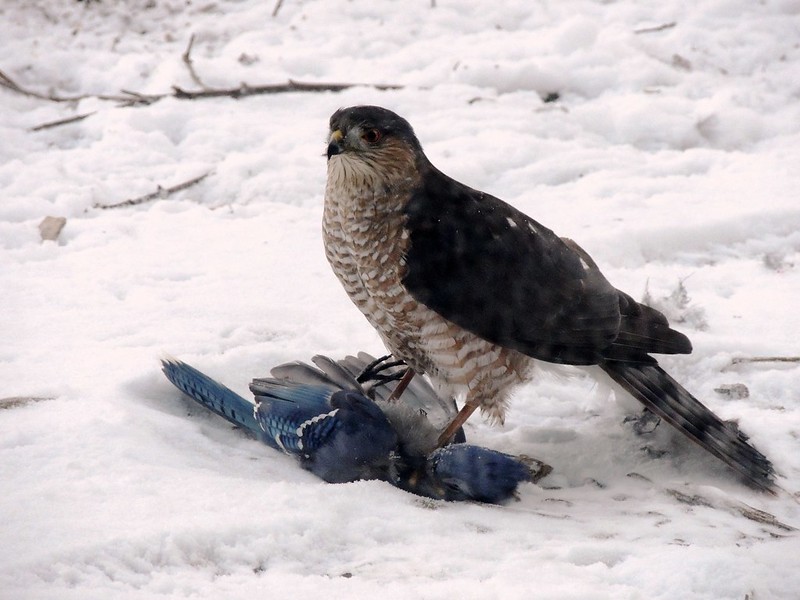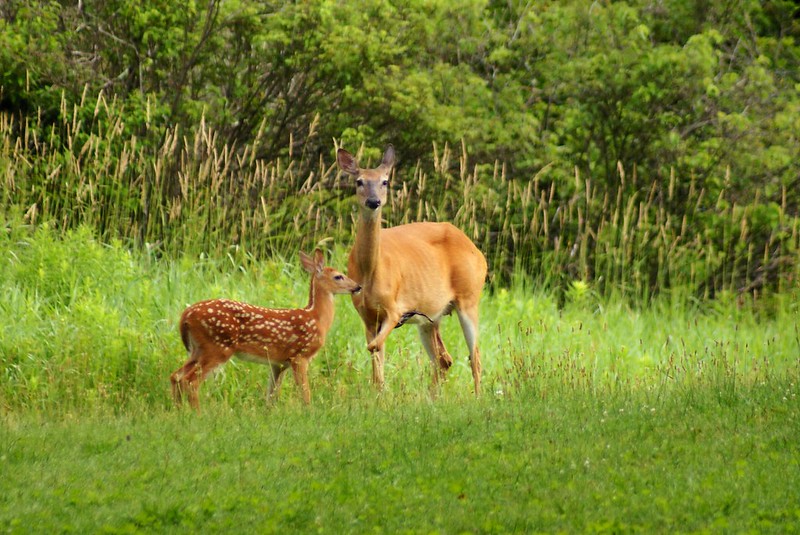When you teach about the natural world, you realize you spend a significant number of hours discussing the concept of food chains, food webs, and trophic levels with students. Food chains are the most basic introduction to relationships between plants and animals; plants get eaten by an herbivore, the herbivore gets eaten by another animal, and so on until you get to the top. This gets more complicated when you begin branching out into a food web. Start thinking about just how many animals can eat a rabbit and you realize that your nice, straight line has all of a sudden turned into small tree with a multitude of branches leading up to the rabbit’s many potential predators.
Even with the complicated mix of predator and prey relationships, there are always animals that lay claim to the top of the food web. This is the apex predator, the top predator in a given ecosystem and the one with no natural predators of its own.
Some parts of the world have very distinct top predators, such as lions and tigers and wait… are bears a top predator? Oh my. Well, it really depends on the bear and the location, but generally few things will eat a bear on any regular basis. A polar bear is most certainly an apex predator, but the black bears one might find a little closer to home are harder to figure out. Most black bears prefer a quieter life of plants and insects, some with the occasional fish. They tend to be opportunistic scavengers feasting on animal carcasses or even human trash, rather than hunting and killing their prey. Despite their more plant heavy diet, they still reign top of the food chain in many places, as they have no other natural predators.

In fact, the largest real danger to the black bear is humans. However, our diverse diets and overall removal from any one specific ecosystem makes us hard to place. In the end, humans don’t really fit in any of the usual places on the food chain and much of the population exists somewhat outside of the usual definition of a predator thanks to grocery stores.
Black bear populations have varied in number throughout history, but currently their numbers have increased and are stable in the northeast United States. However, many of our present and historical apex predators have populations that have dramatically risen or fallen through the years, often due to human influence.
To many people, large predators are perceived to be dangerous or scary, and historically humans have hunted or otherwise tried to rid these apex predators from developed areas. Many have been hunted to near extinction. Unfortunately, this loss can throw entire ecosystems off balance and have effects further down the food chain.
In some areas of the world, the apex predator has disappeared from the region entirely, upsetting the ecosystem’s usual homeostasis and requiring a new status quo to try to develop. Gray wolves and cougars, also known as mountain lions, once roamed the forests of Western NY and Northern PA, but neither are fully present in the northeastern United States today. Wolves have been extirpated, or locally extinct, in this area, and although there have been rumored sightings, we do not have a sustainable population of mountain lions around here.
As large predators disappear, of course other animals move in to fill that niche. Coyotes are now a common sight across the northeast, and their adaptability means they live everywhere from rural wooded forests to towns and even large cities. Without wolves or mountain lions, their population remains unchecked and they have now found themselves as one of the top predators in many areas. Coyotes are opportunistic, eating whatever they can find whether that is in the woods or the food out of trash cans and dumpsters. With little competition and a varied diet, their range has continued to expand across the entire United States, up into Canada, and currently packs are being found even further south into Central America. There are also now coyote packs in large cities, such as Chicago and Los Angeles, because they have access to small prey, ample amounts of trash, and there is no hunting in such urban areas.

That’s not to say coyotes are the only predator in New York and Pennsylvania. They may be smaller, but Fisher, foxes, and bobcats still remain in the area. Looking towards the sky, eagles and hawks are still abundant as well. Unfortunately, these animals are not large enough to keep any sort of large prey animal, namely the deer, from becoming overpopulated. An overabundance of deer is one of the most obvious and persistent issues many areas of the United States are dealing with. Deer eat plants and understory growth in forests and without a predator to manage the deer population, forest habitats have changed dramatically. But we can’t turn back time and once they’re gone, they’re gone. Right? Well, maybe.
The reintroduction of large predators is controversial. It makes sense that people are concerned for their safety and many farmers are concerned for their livestock and thus their livelihood. The thought that these animals might attack livestock is a big reason these animals were even hunted in the first place. The presence of apex predators, especially with humans scattered across so much of the country, has been a subject of debate for decades, and it is likely to continue to be a topic with strong feelings by the public, scientists and others for years to come as humans become more aware of our effects on the environment and the resulting impacts on food webs and ecosystems.
Audubon Community Nature Center builds and nurtures connections between people and nature. ACNC is located just east of Route 62 between Warren and Jamestown. The trails are open from dawn to dusk as is Liberty, the Bald Eagle. The Nature Center is open from 10 a.m. until 4:30 p.m. daily except Sunday when it opens at 1 p.m. More information can be found online at auduboncnc.org or by calling (716) 569-2345.


Recent Comments